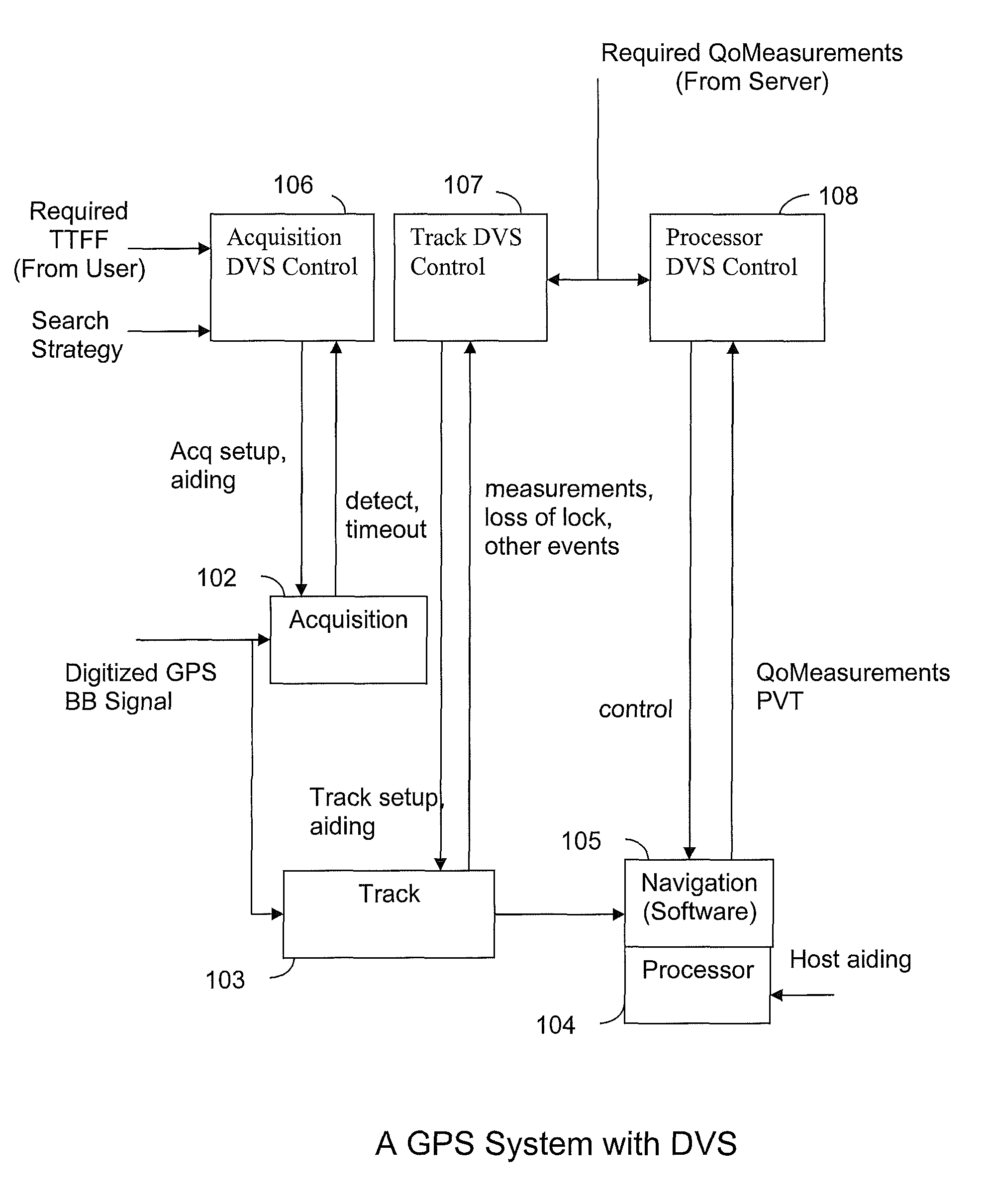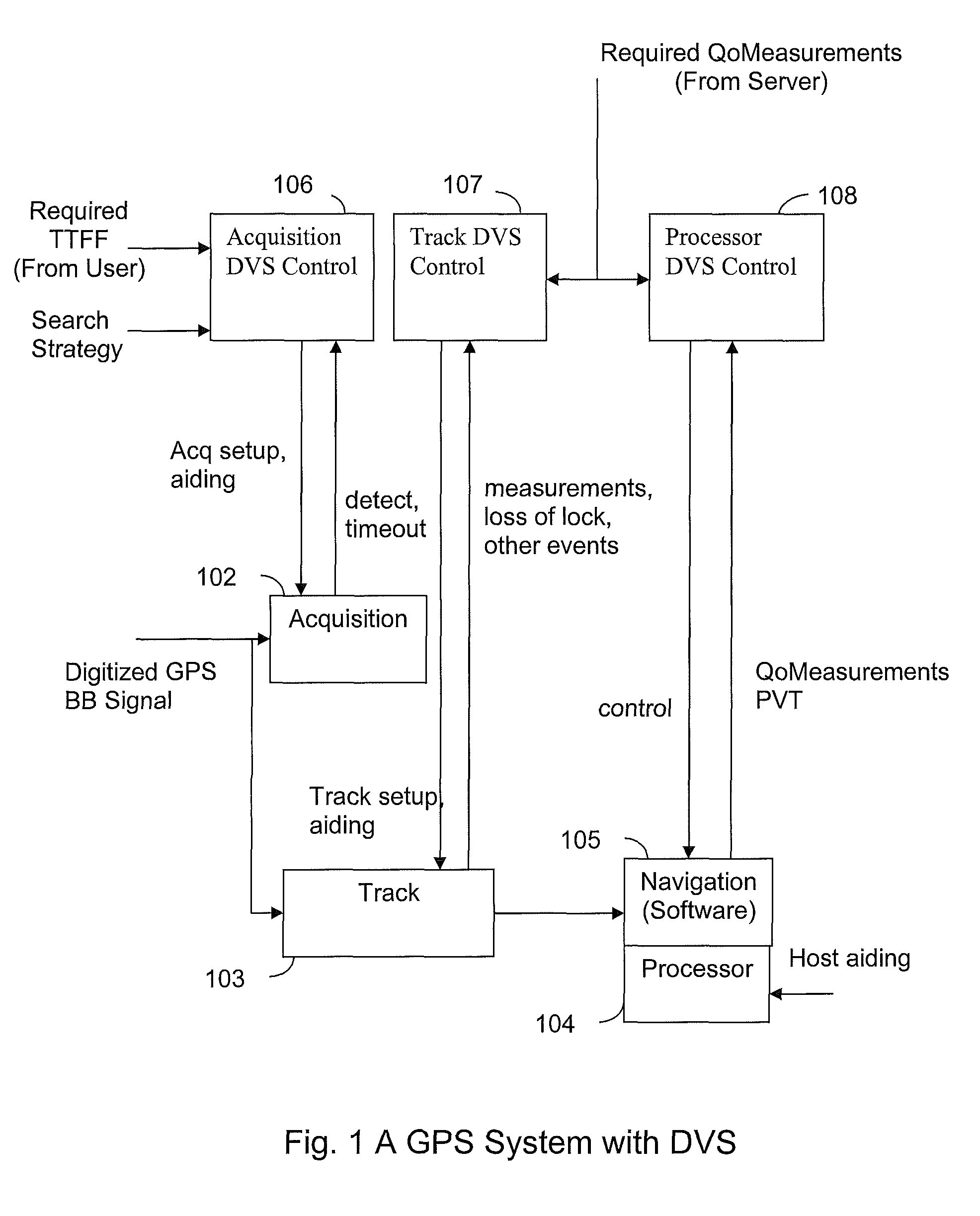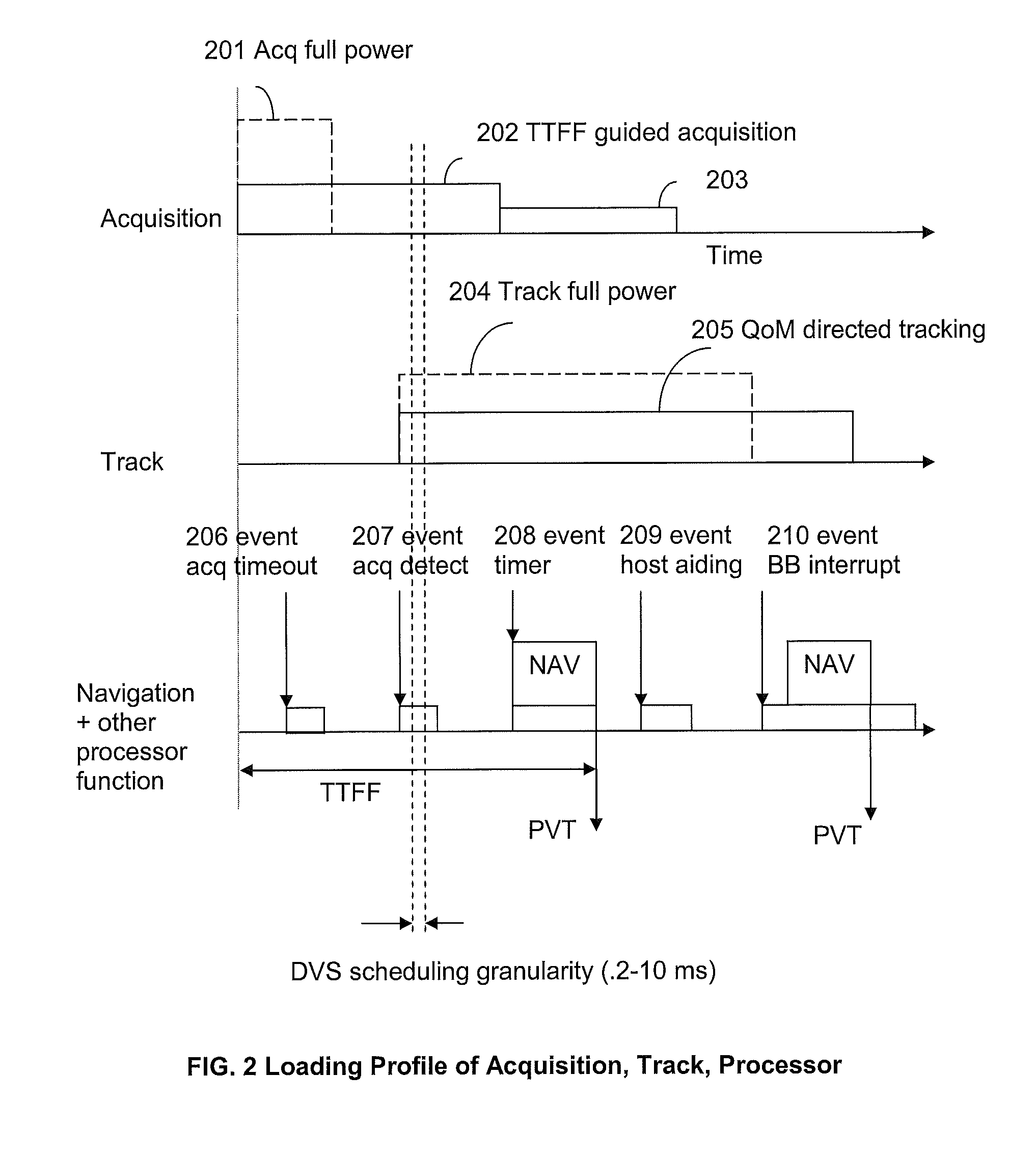System and method for dynamic voltage scaling in a GPS receiver
a dynamic voltage and receiver technology, applied in the field of system and method for reducing power consumption in satellite navigation receivers, can solve the problems of not being able to adopt dvs in real time signal processing environments such as those encountered by gps receivers, and not being optimized for greater power saving, so as to reduce processor power consumption, reduce baseband power consumption, and minimize receiver power consumption
- Summary
- Abstract
- Description
- Claims
- Application Information
AI Technical Summary
Benefits of technology
Problems solved by technology
Method used
Image
Examples
Embodiment Construction
[0019]Systems and methods are disclosed for using DVS in GPS receivers to reduce receiver power consumption while also meeting performance requirements. GPS receivers conventionally have a baseband subsystem and a processor to carry out processing required for determining a navigation solution. The baseband subsystem performs acquisition and tracking of satellite signals to make range measurements to the satellites. The baseband subsystem also performs demodulation of satellite data to obtain satellite orbital information. The processor runs navigation software using the range measurements and the satellite orbital information obtained by the baseband subsystem to generate a navigation solution. In addition, the processor may run firmware to control the baseband subsystem and may also interface with an external host processor. The baseband subsystem and processor are generally implemented in a CMOS process where dynamic power of the circuitry is proportional to the square of the sup...
PUM
 Login to View More
Login to View More Abstract
Description
Claims
Application Information
 Login to View More
Login to View More - R&D
- Intellectual Property
- Life Sciences
- Materials
- Tech Scout
- Unparalleled Data Quality
- Higher Quality Content
- 60% Fewer Hallucinations
Browse by: Latest US Patents, China's latest patents, Technical Efficacy Thesaurus, Application Domain, Technology Topic, Popular Technical Reports.
© 2025 PatSnap. All rights reserved.Legal|Privacy policy|Modern Slavery Act Transparency Statement|Sitemap|About US| Contact US: help@patsnap.com



